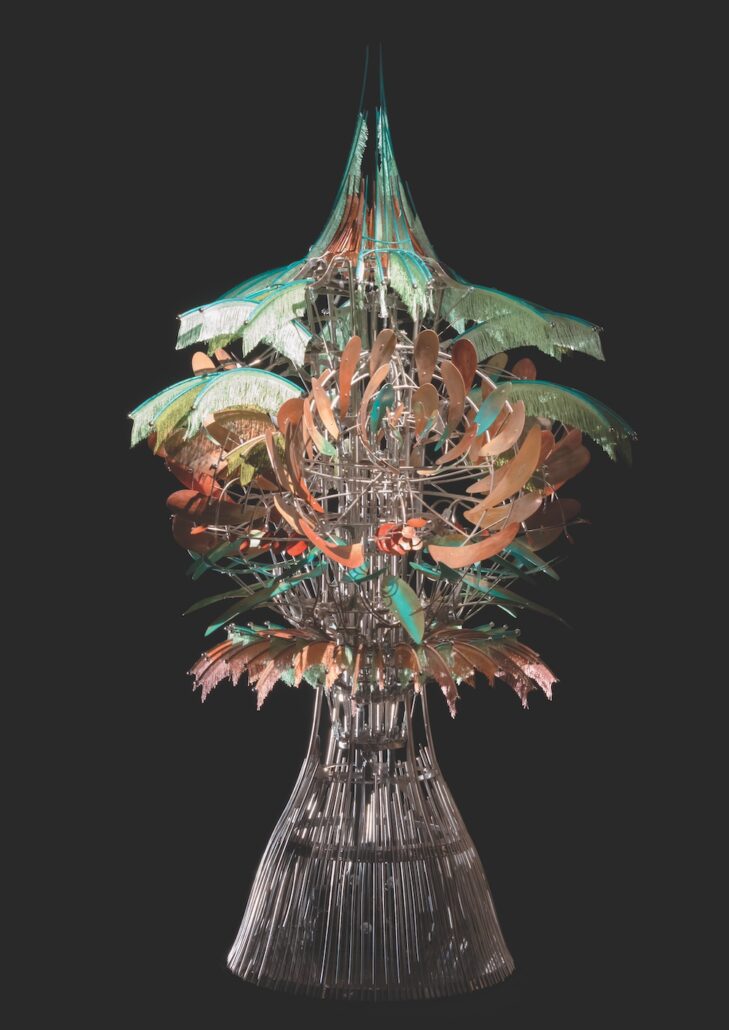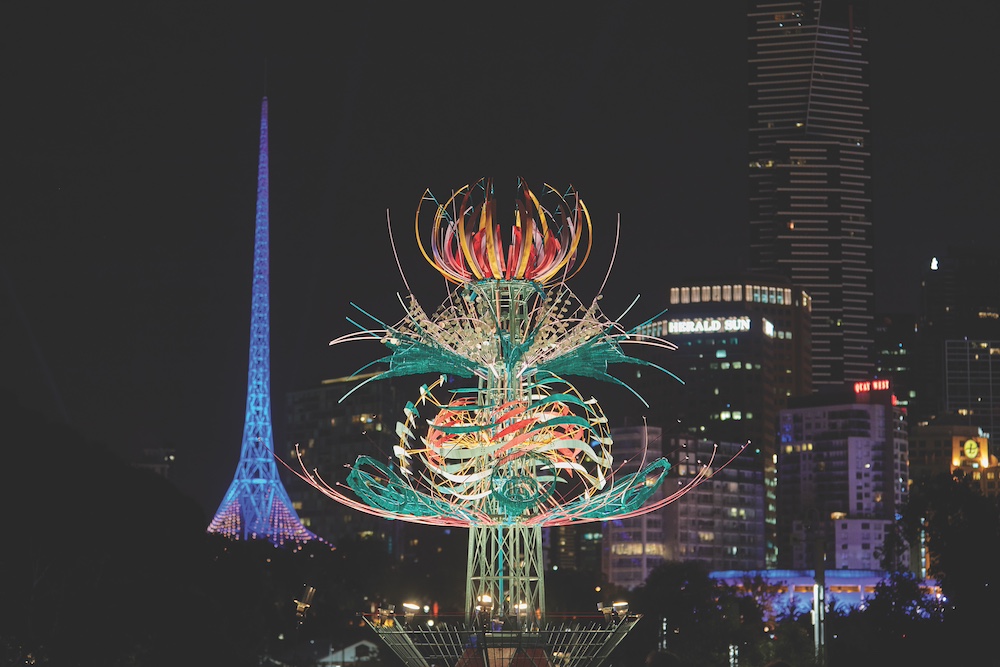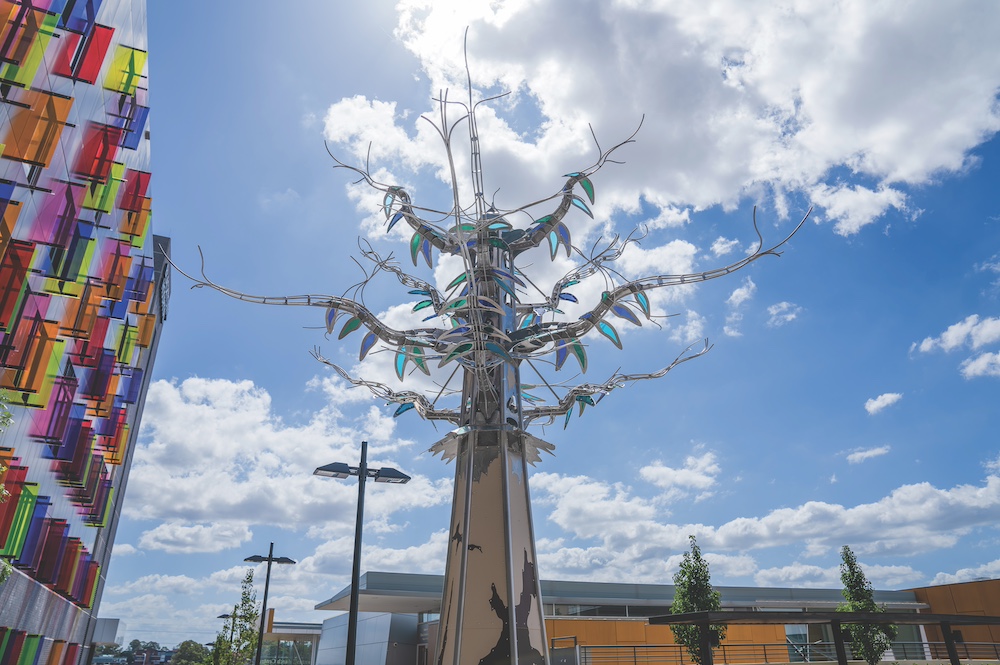The natural world at its most fundamental level is simply a system of interlocking pieces — a multitude of tiny parts moving in a steady progression across time and space, changing and growing in symbiosis with one another.
It is fitting then that Victoria-based artist Alex Sanson seeks to emulate this macrocosm using kinetic sculptures that utilise the symbolic potential of trees. His towering steel works tick over, enacting long, mesmerising sequences of movement enabled by elaborate mechanisms – “no obscure black box technology here”.
“Plant-forms and trees in particular have really become an emblem for me of my love of nature, and they serve as inspiration on a conceptual level”, says the artist, “the more I discover of the complexity of the relationships between trees and all other organisms in a forest, the more fascinated I become, and this is very fertile ground for inspiration for new works”.
Much like the organic kind, Sanson’s trees come in all sorts of wonderful shapes and colours, with glowing expanses of steel which branch and intertwine, radiating outward from a central structure that directs each piece in a dance around one another.
While some of his pieces are smaller and more intimate, suitable for the gallery floor, most take the scale of trees quite literally. These massive structures often take the form of public art, as with his piece on the Wimmera riverfront in Horsham, or his collaborative work with Leanne Tobin at Blacktown hospital. They have also featured in a large array of music and arts festivals, including White Night in Melbourne, Real Festival in Sydney, Spilt Milk in Canberra, The Outback Eclipse Festival in South Australia, and Upstream in Wodonga, Victoria.
Trees are flexible. They move in the breeze, curve around one another, and interact with the vast network of organisms around them. Sanson’s practice is a celebration of this vigour and innate adaptability, revelling in the visual and allegorical potentiality of his subject.
Above: Alex Sanson, Spherophyte, 2016. Steel, fringe, sequins, polycarbonate and mechanical components, 6.5 x 5 x 5m. Photo: Sense6 photography. Courtesy: the artist.

Alex Sanson, Manifold, 2022. Stainless steel, steel, aluminium, mechanical components, fringe and wax pigment, 2.2 x 1.1 x 1.1m. Photo: Lorena Carrington and James McArdle.

Alex Sanson and Leanne Tobin, Djalgala Yarra, 2019. Stainless steel, acrylic, mechanical components and paint, 6 x 5.2 x 5.2m. Photo: Rich Mammoliti.

